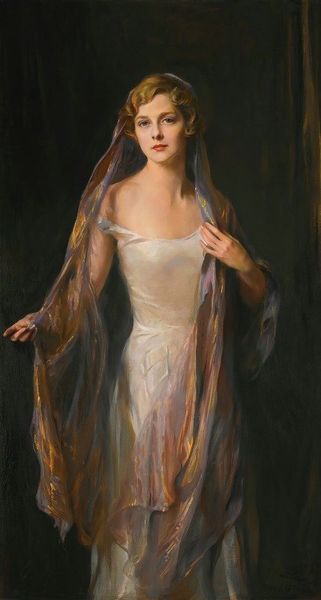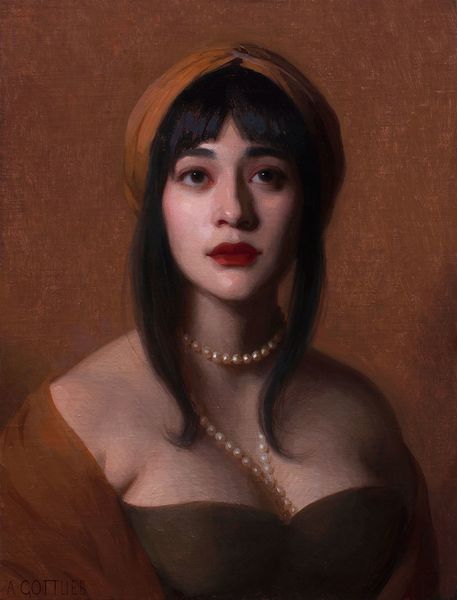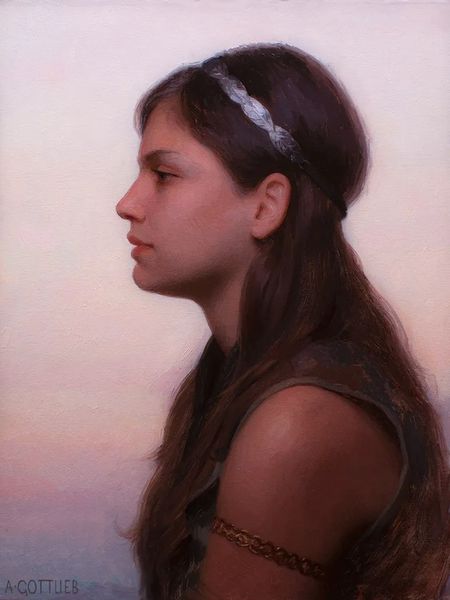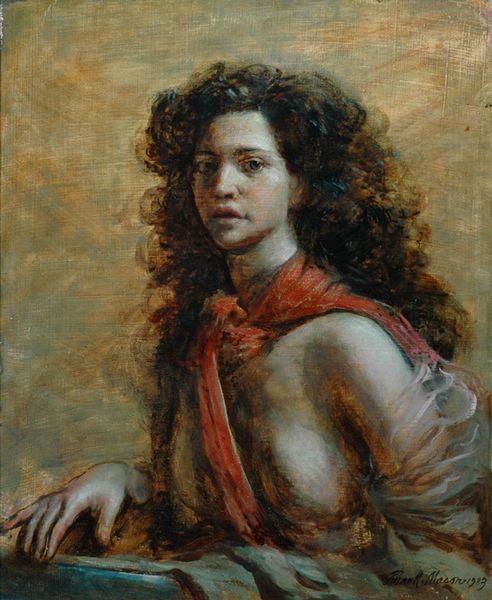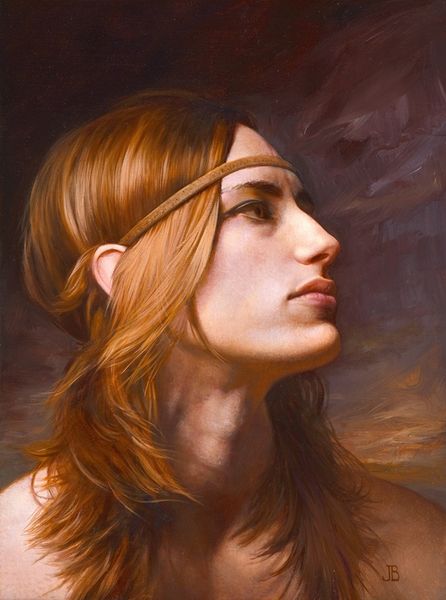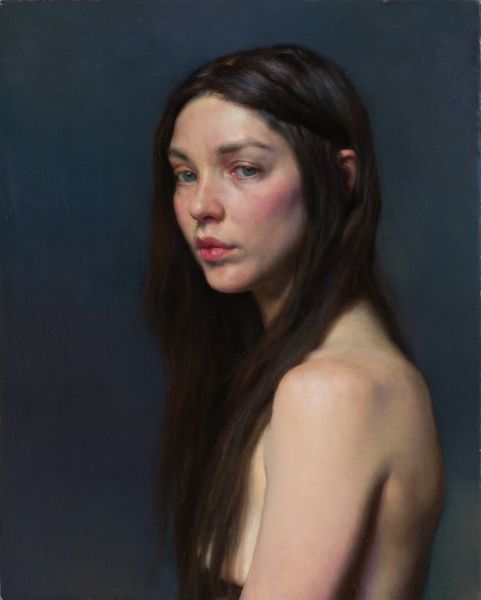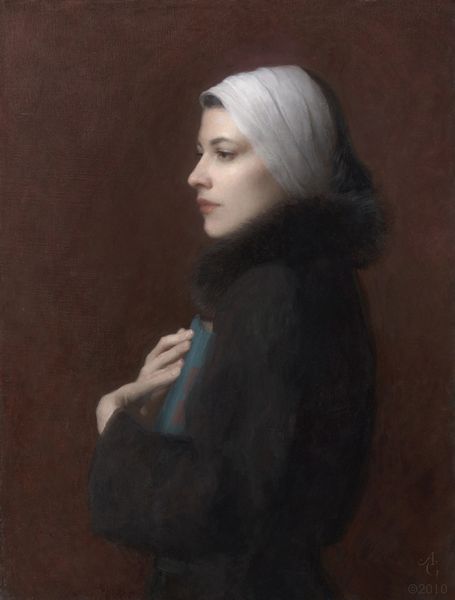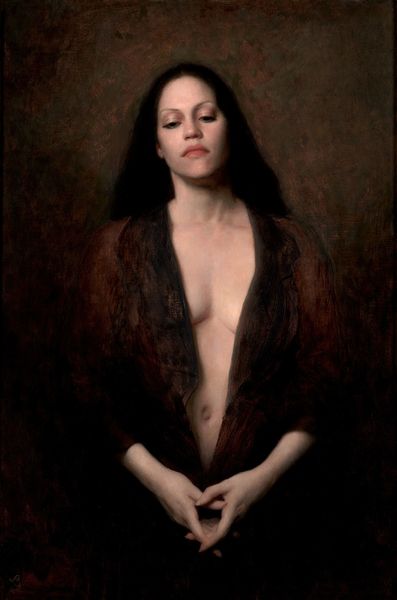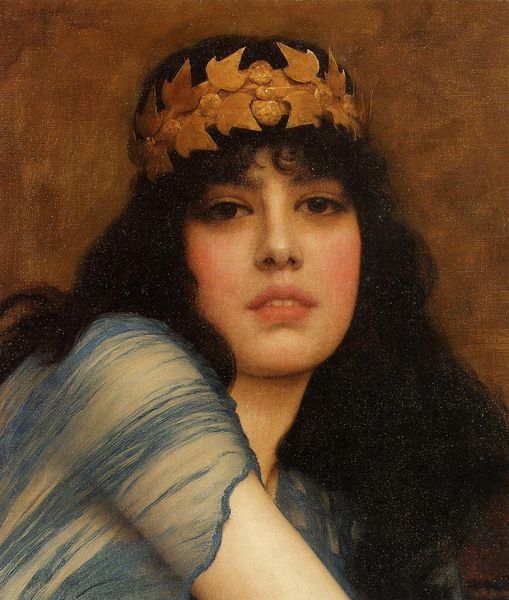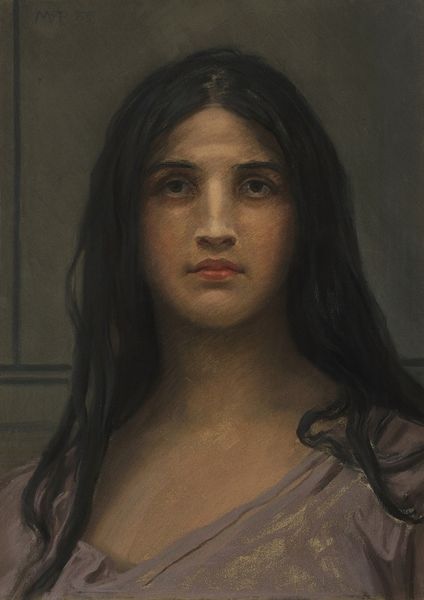
painting
#
portrait
#
figurative
#
painting
#
history-painting
#
academic-art
#
realism
Copyright: Modern Artists: Artvee
Editor: This is "Enigma" by Adrian Gottlieb. I’m really struck by the contrast. Her gaze is direct, yet she’s wearing a crown of thorns, usually associated with suffering. What's your interpretation of this painting? Curator: The crown immediately evokes Christian iconography, the Passion of Christ. It carries that immense weight of suffering, sacrifice, and, ultimately, redemption. However, placing this potent symbol on a woman alters its reading drastically. Consider what it means to apply that traditionally male-associated iconography onto a female figure. What emotional resonances emerge from that intersection? Editor: So, the shift in gender...does that suggest maybe a universalization of suffering? Like, not just Christ, but humanity? Curator: Precisely! It allows us to view suffering, not just as a religious concept tied to a specific figure, but as an intrinsically human experience. Are we meant to consider this as her personal torment or something else? Editor: Something else...Maybe about endurance, resilience in the face of adversity. She looks strong, despite the crown. Curator: Yes, her gaze isn’t defeated or mournful. It's resolute. Think about the tradition of female saints or martyrs. Does that tradition inform how we see this painting? The thorn is also an ambivalent sign, right? Beauty and protection, but also danger. Editor: Definitely. It’s like a warning and a sign of strength at the same time. I hadn't thought about how much the traditional symbolism is flipped. Curator: It layers meaning, forcing us to re-evaluate preconceived notions about strength, suffering, and iconography itself. What seems simple, in this academic style of painting, has so many nuances that shape how viewers come to new understandings of resilience. Editor: This has given me a completely new perspective on reading symbolism in portraits, it’s fascinating! Curator: Indeed, it’s a reminder that symbols, no matter how fixed they may seem, can always be re-contextualized, and revitalized, depending on where we put them.
Comments
No comments
Be the first to comment and join the conversation on the ultimate creative platform.

